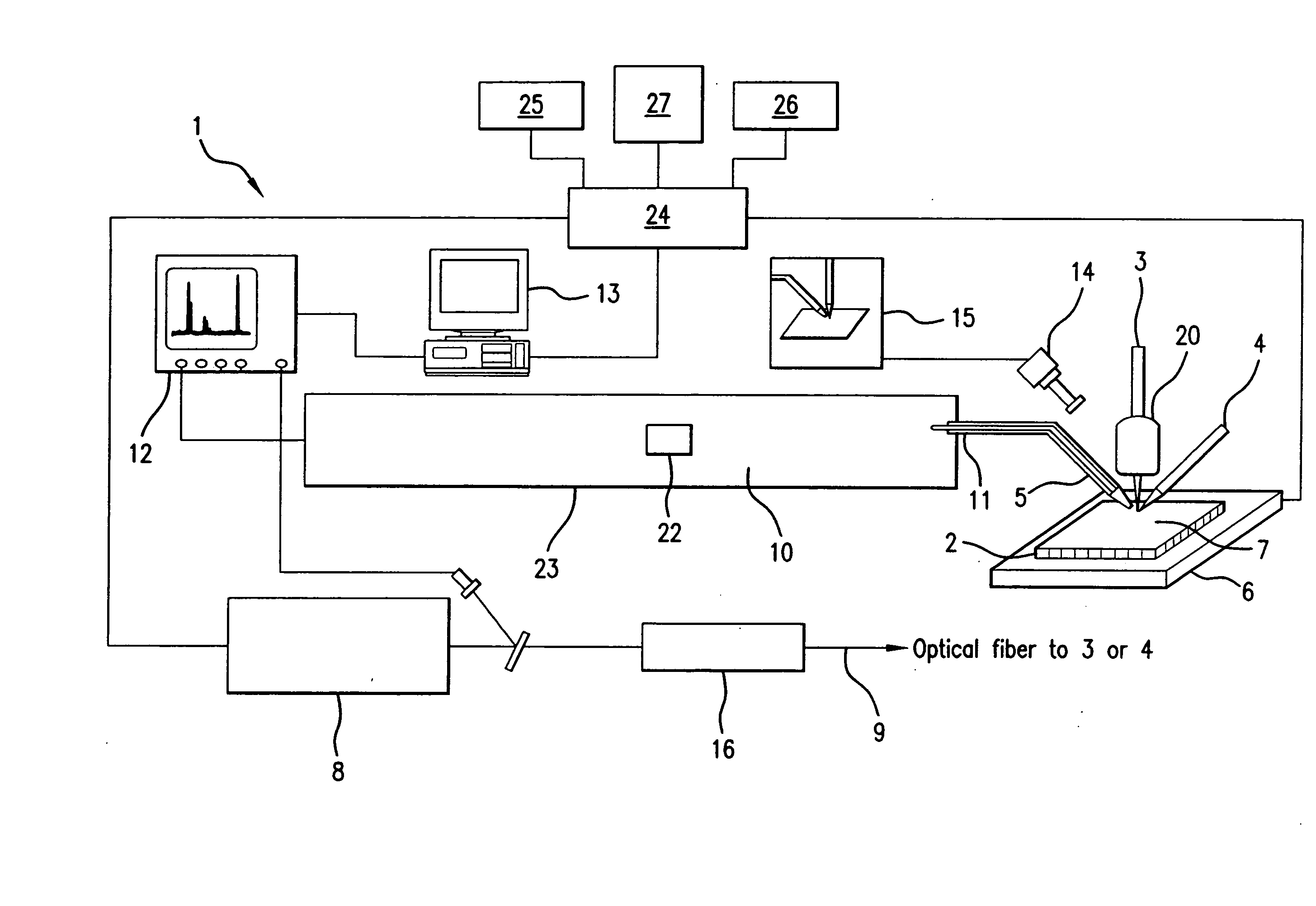Protein Microscope
a protein microscope and microscope technology, applied in the field of protein microscopes, can solve the problems of inability to molecular imaging at the source of conventional esi, the inability to identify biochemical species in a single way, and the specificity of these methods
- Summary
- Abstract
- Description
- Claims
- Application Information
AI Technical Summary
Benefits of technology
Problems solved by technology
Method used
Image
Examples
Embodiment Construction
[0046]The present invention provides a novel system and method for analyzing and imaging samples of interest. The sample, also referred to as the target material, normally comprises a mixture of analyte materials and light-absorbing matrix substances. The sample can be solid or liquid and is composed of one or more materials selected from the groups consisting of peptides, proteins, lipids, carbohydrates, organic compounds and inorganic compounds. A particularly preferred material comprises tissue samples such as, for example, those disclosed in U.S. Pat. No. 5,808,300, which is hereby incorporated by reference herein in its entirety.
[0047]The sample is deposited in a matrix on a target surface of a sample support. When illuminated with the laser beam, the matrix molecules are ionized and evaporated. The ionized matrix molecules subsequently ionize the analyte molecules through charge transfer process. At the same time, the analyte molecules, analyte ions and fragmented analyte ions...
PUM
 Login to View More
Login to View More Abstract
Description
Claims
Application Information
 Login to View More
Login to View More - R&D
- Intellectual Property
- Life Sciences
- Materials
- Tech Scout
- Unparalleled Data Quality
- Higher Quality Content
- 60% Fewer Hallucinations
Browse by: Latest US Patents, China's latest patents, Technical Efficacy Thesaurus, Application Domain, Technology Topic, Popular Technical Reports.
© 2025 PatSnap. All rights reserved.Legal|Privacy policy|Modern Slavery Act Transparency Statement|Sitemap|About US| Contact US: help@patsnap.com



